At the beginning of August JAXA/ViSHOP extent is in a “statistical tie” for 3rd lowest for the date in the satellite era:
Extent has been declining rapidly for the past few days, and further losses look likely in the Beaufort Sea on either side of an arm of high concentration ice visible in the Alfred Wegener Institute’s map of sea ice concenration:
The ice on the Atlantic side of the Arctic is starting to look highly fragmented, all the way to the North Pole.
The PIOMAS gridded thickness data for July 2025 has just been released. The Beaufort arm is also visible as an area of thicker ice. There is also a parallel arm of ice around a meter thick extending into the East Siberian Sea:
The associated volume graph reveals a modelled Arctic sea ice volume of 6.57 thousand km³ on July 31st, which is 2nd lowest for the date:
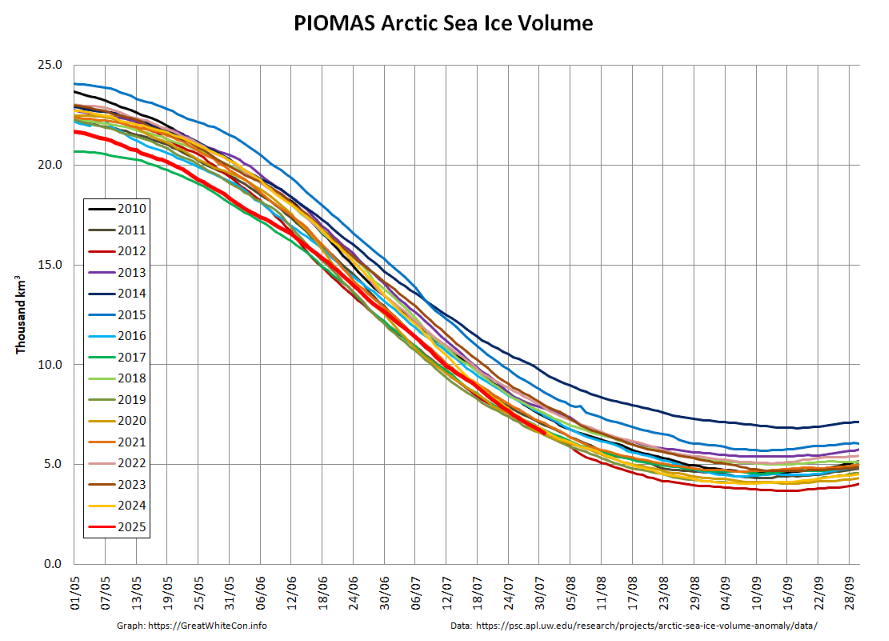
According to the National Snow and Ice Data Center’s “Sea Ice Today“ overview of Arctic sea ice conditions in July 2025:
The average air circulation pattern as sea level was somewhat unusual, with low sea level pressure over much of the Arctic Ocean, a large center of low pressure encompassing most of the Canadian Arctic Archipelago and Greenland, and separate areas of low pressure over central and eastern Russia. A region of high pressure (anticyclonic conditions) prevailed in the Beaufort Sea north of Alaska. Note that the pressure pattern over the Fram Strait region implies winds from the south, acting to inhibit ice transport through the Strait. This helps to explain the below-average ice extent in the East Greenland Sea:
Temperatures at the 925 hPa level (about 2,500 feet above the surface) were up to 4 degrees Celsius above average over the Laptev Sea, where… extent is well below average. Below average temperature prevailed over most of the Canadian Arctic Archipelago and south of the Barents Sea coast. Clear skies under the high pressure in the Beaufort Sea likely allowed for enhanced surface melting:
[Update – August 27th]The downward linear trend in Arctic sea ice extent through 2025 for July is 65,000 square kilometers per year or 6.9 percent per decade relative to the 1981 to 2010 average (Figure 3). Based on the linear trend, since 1979, June has lost 3.01 million square kilometers of sea ice. This is equivalent to nearly twice the size of Alaska:
JAXA Arctic sea ice extent is currently 4.76 million km², 10th lowest for the date and identical with the 2010’s average:
Most of the arm of old ice in the Beaufort Sea has melted out, whereas much of the ice in the arm of thicker ice in the East Siberian Sea remains:
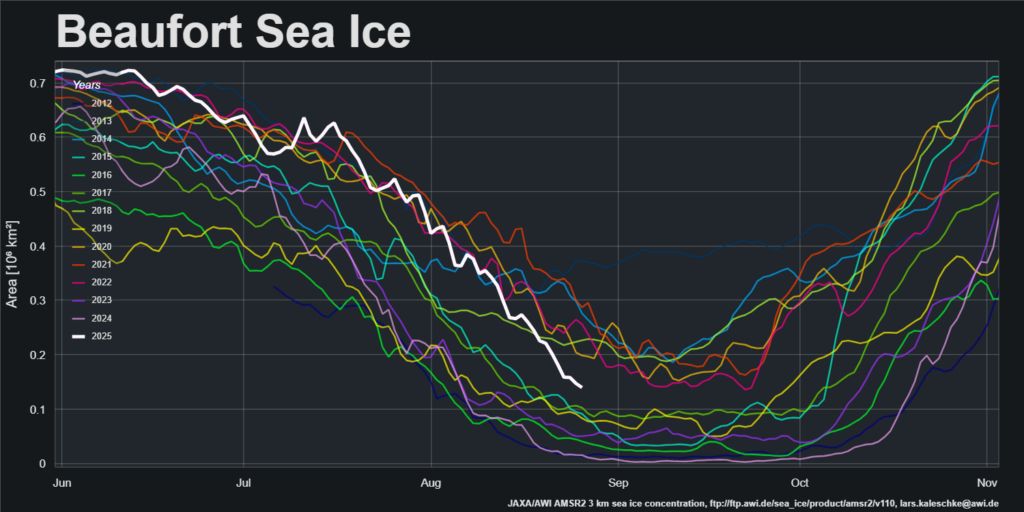
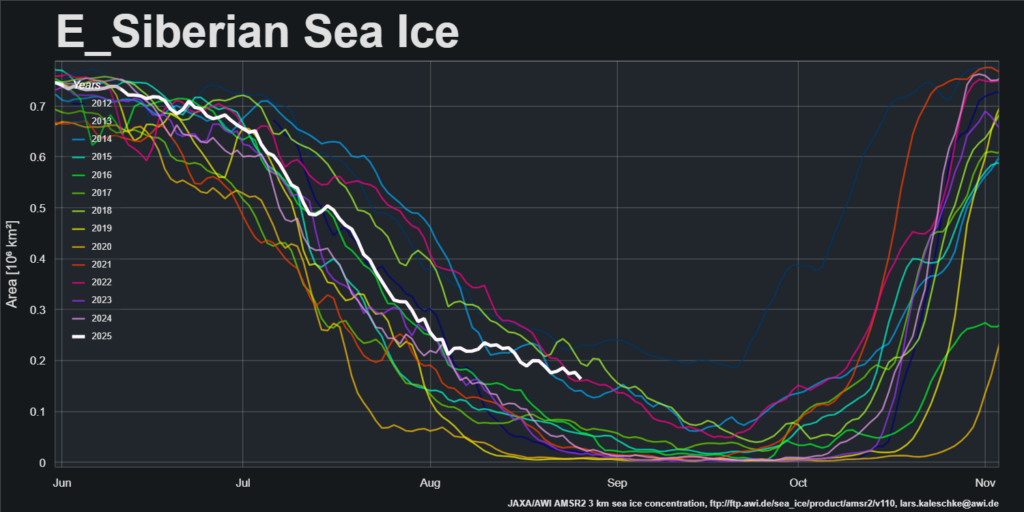
The conversation continues over on the September open thread.
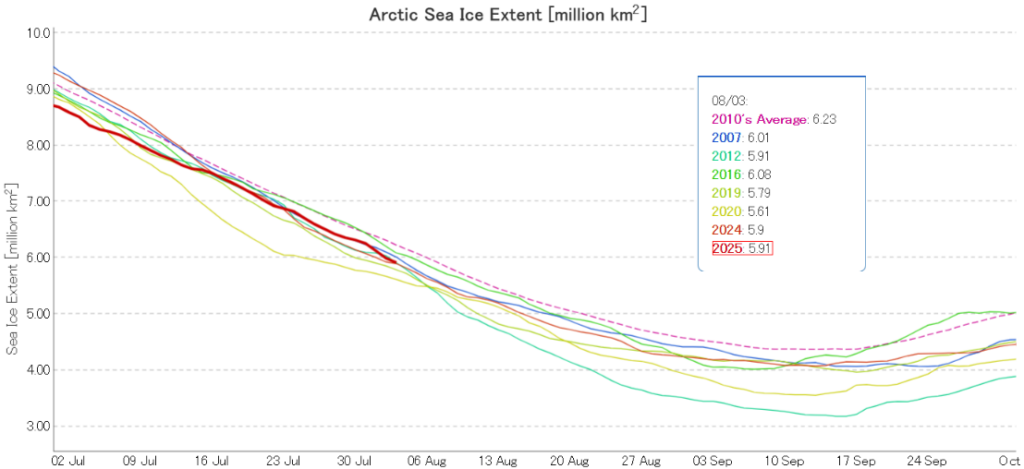
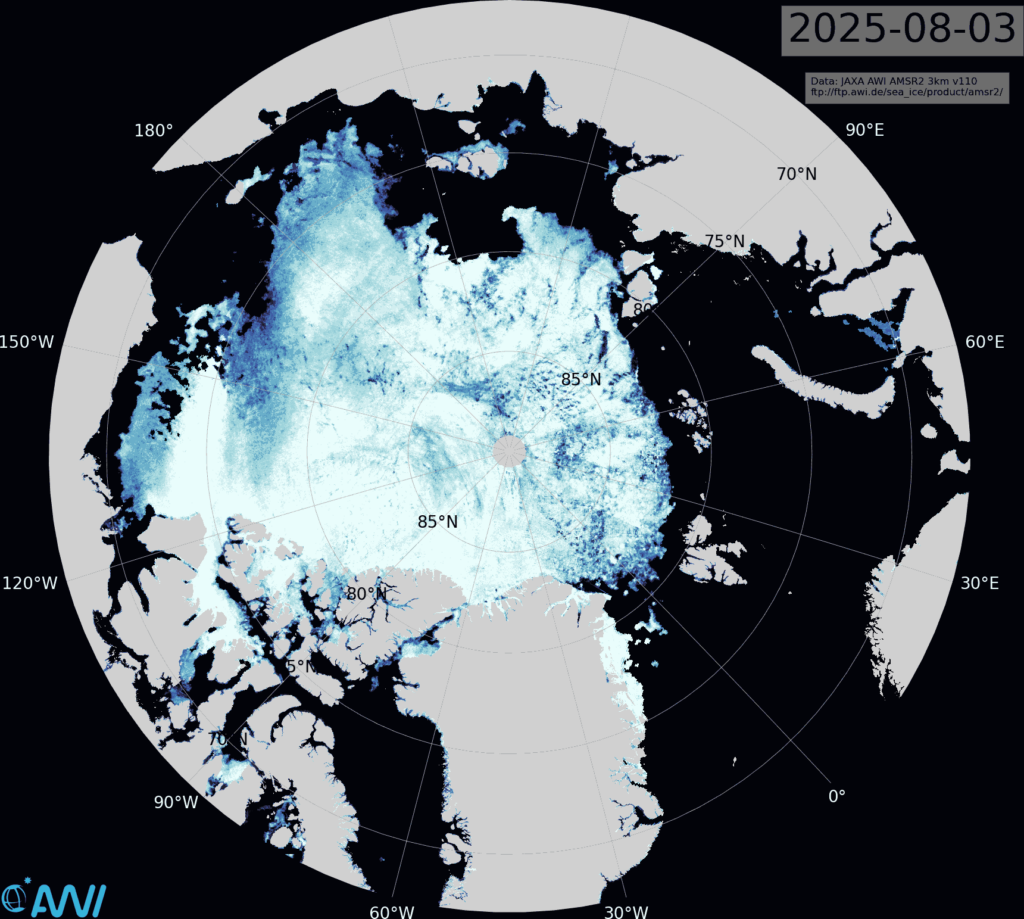
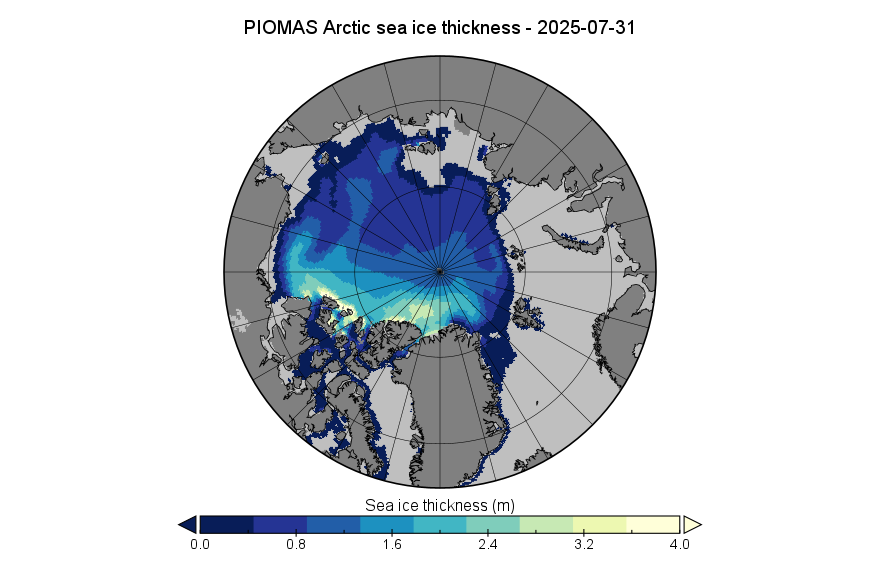

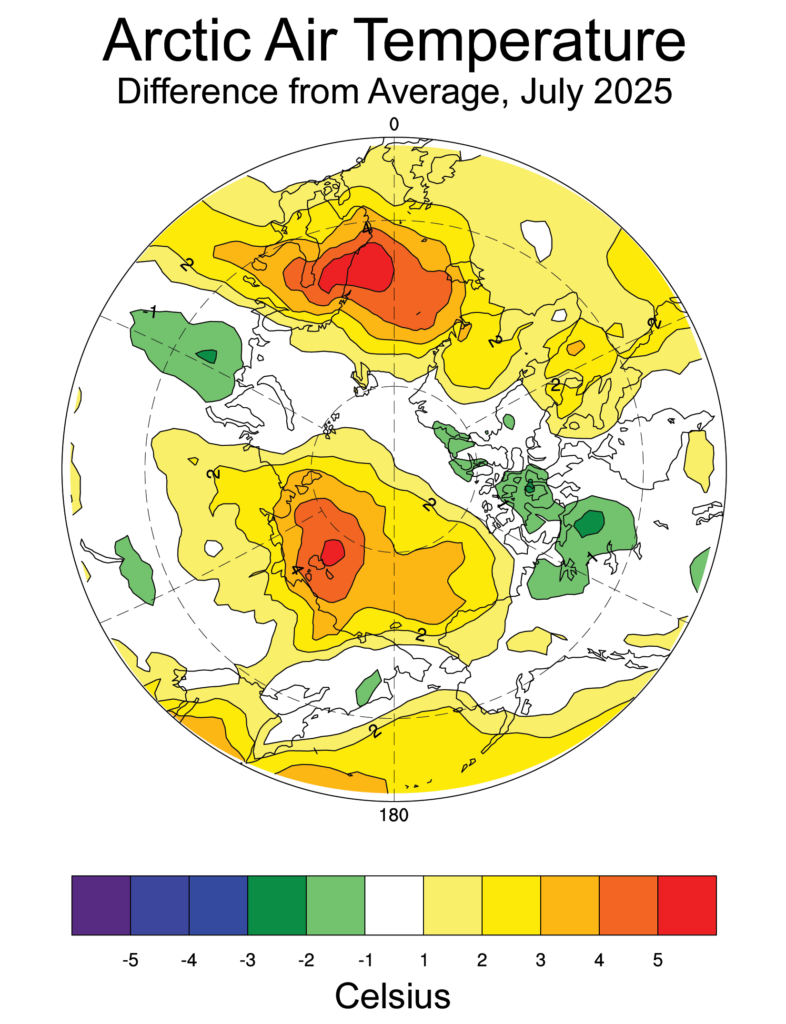
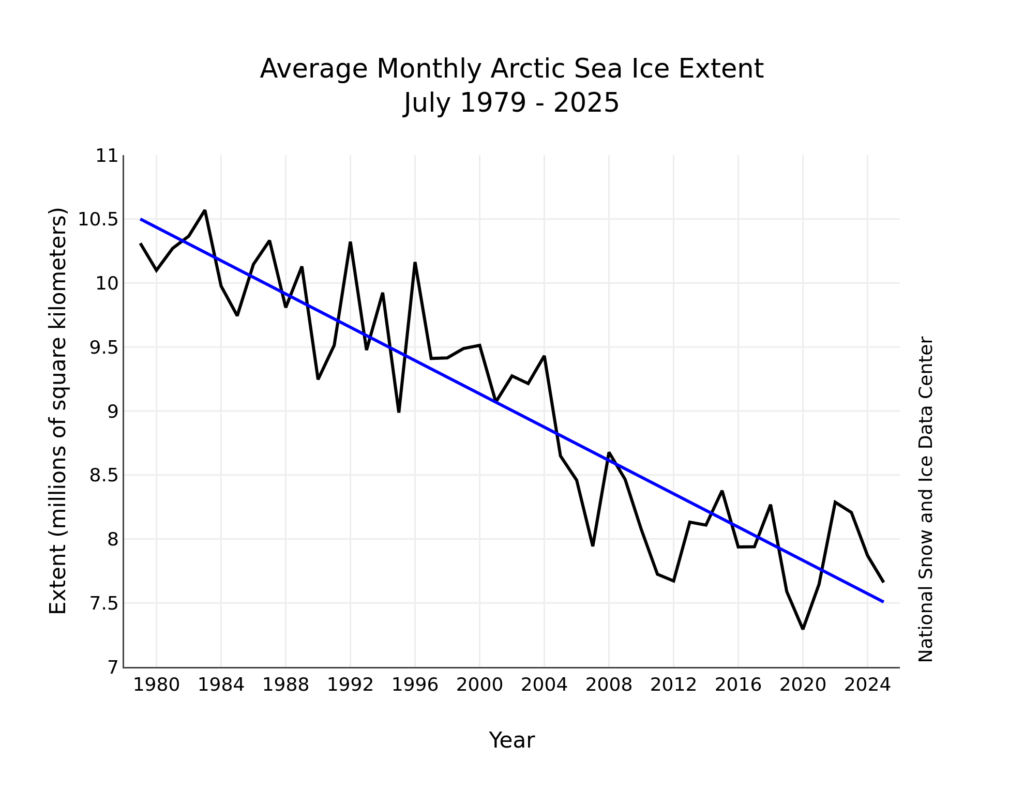
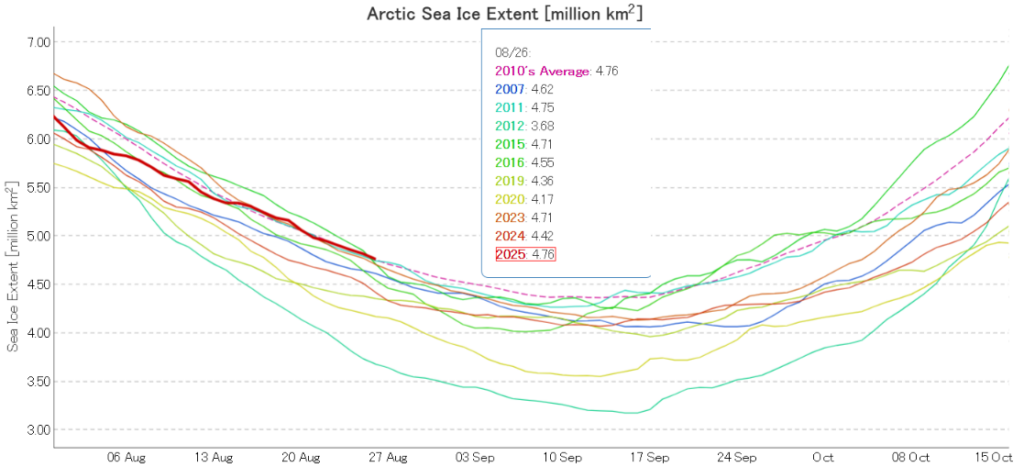
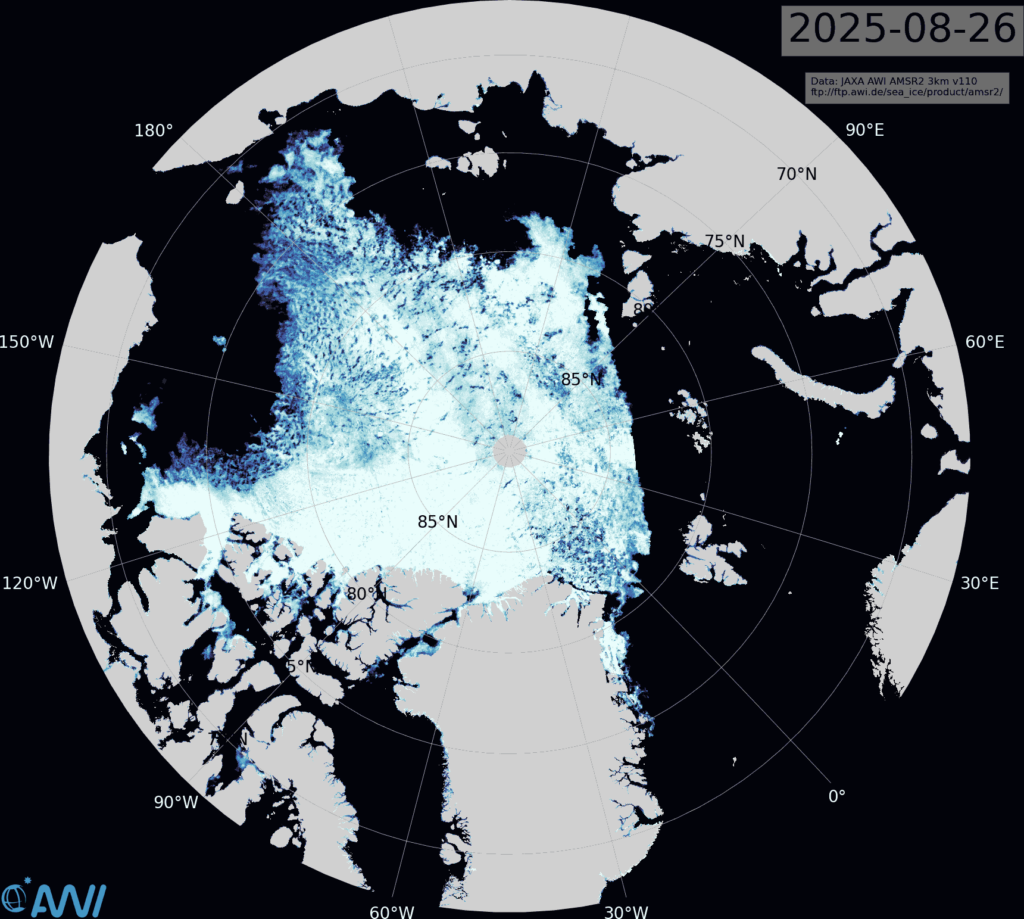
Piomas second lowest for date, despite the Beaufort at a record high!
Just imagine what a big storm could do!
Great news, Jim!
On this day, 8/8, you can now download for the first time PIOMAS daily sea ice volume for June 1st and following days,
‘Daily: Click to Download Daily Ice Volume Data (gzipped file)’
If we count the days from June 1 to August 8, we get a 68-day lag from events in the Arctic to numerical confirmation, making it harder for any interested party to verify and analyse what is happening in the Arctic.
I believe this may be another shocking record low for our monitoring of the Arctic situation. Here’s to hoping new/better satellite & AI based sea ice volume services will soon come online!
Have the “unconditioned stimulus” be the input and let the error control a process that changes the gain itself. – from Brown University on neural networks as the basis for AI.
Yeah I think AI is just going to amplify the problem since the data processing is actually just increased heat output as entropy requiring fresh water to be sucked out of the land. Global warming enables AI to exist since the fresh water evaporated to process the data can be better absorbed by the atmosphere.
I think it’s the Cryosat crew that has pledged to go 365 with their Arctic sea ice volume data, applying AI ‘knowledge’ to supply us with ice data even in summer, specifically to tell melt ponds on the ice from sea surface. Without the AI they will misjudge summer sea ice on the side of too little ice, as any meltpond small or large will automatically be read as zero ice.
IMHO there’s no need to go into ‘for or against AI’ here as that’s not really a practical choice before us, and getting better (and not least more reliable) data year round is a good thing, at least in sea ice monitoring circles.
Seems there was a “regime shift” in 2007 and Arctic ice extent has trended about the same since then. But maybe the AGU have got it all wrong?
https://agupubs.onlinelibrary.wiley.com/doi/full/10.1029/2024GL114546
Maybe the NSIDC also “got it all wrong” in 2020?
Still hoping for that “ice free” summer ehh?